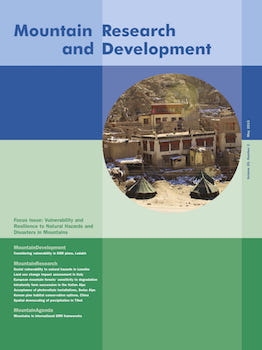Lesotho's landlocked mountainous setting with thin regolith cover and poor economic situation make it vulnerable to hazardous events associated with climate such as drought, floods, strong winds, heavy snowfall, and severe frost. To date, no quantitatively based vulnerability assessment has been undertaken in this heavily populated, developing region in southern Africa. The primary aim of this study was to assess social vulnerability of communities to natural hazards by applying a place-based social vulnerability index developed for the United States, to the Lesotho context. The study used 2006 Lesotho census data, district government records, and household interviews to identify 27 indicators of social vulnerability in southern Lesotho, and then used principal components analysis to generate a social vulnerability index for the study region. Index scores were summed and then mapped to quantify spatial variability in social vulnerability. The study results show a clustering of highly vulnerable communities in the rural highlands as a result of underdevelopment, poverty, and inaccessibility.
How to translate text using browser tools
1 May 2015
Assessment of Social Vulnerability to Natural Hazards in the Mountain Kingdom of Lesotho
Moipone M. Letsie,
Stefan W. Grab

Mountain Research and Development
Vol. 35 • No. 2
May 2015
Vol. 35 • No. 2
May 2015
Lesotho
Mountains
natural hazards
place-based vulnerability
social vulnerability




